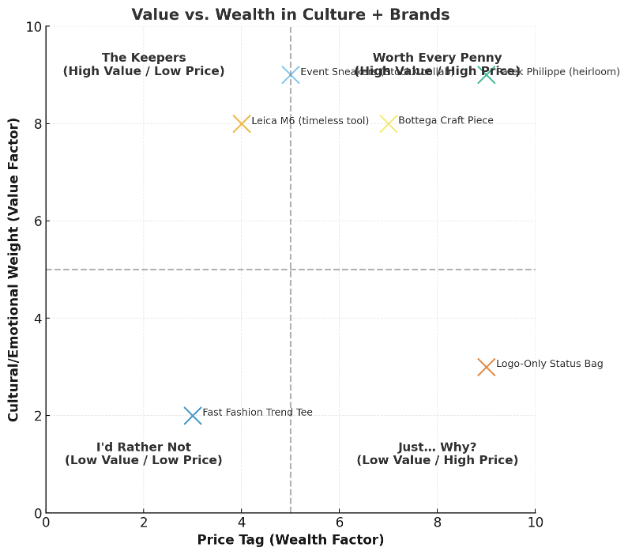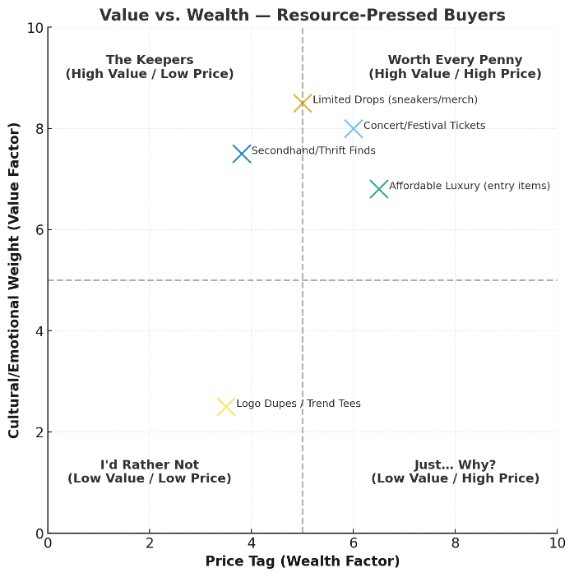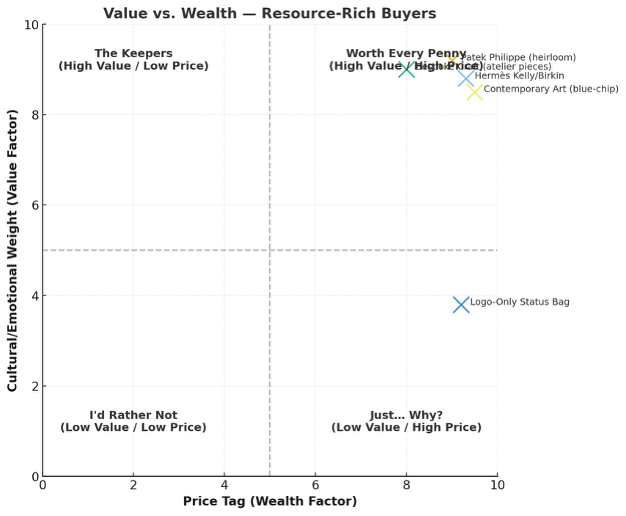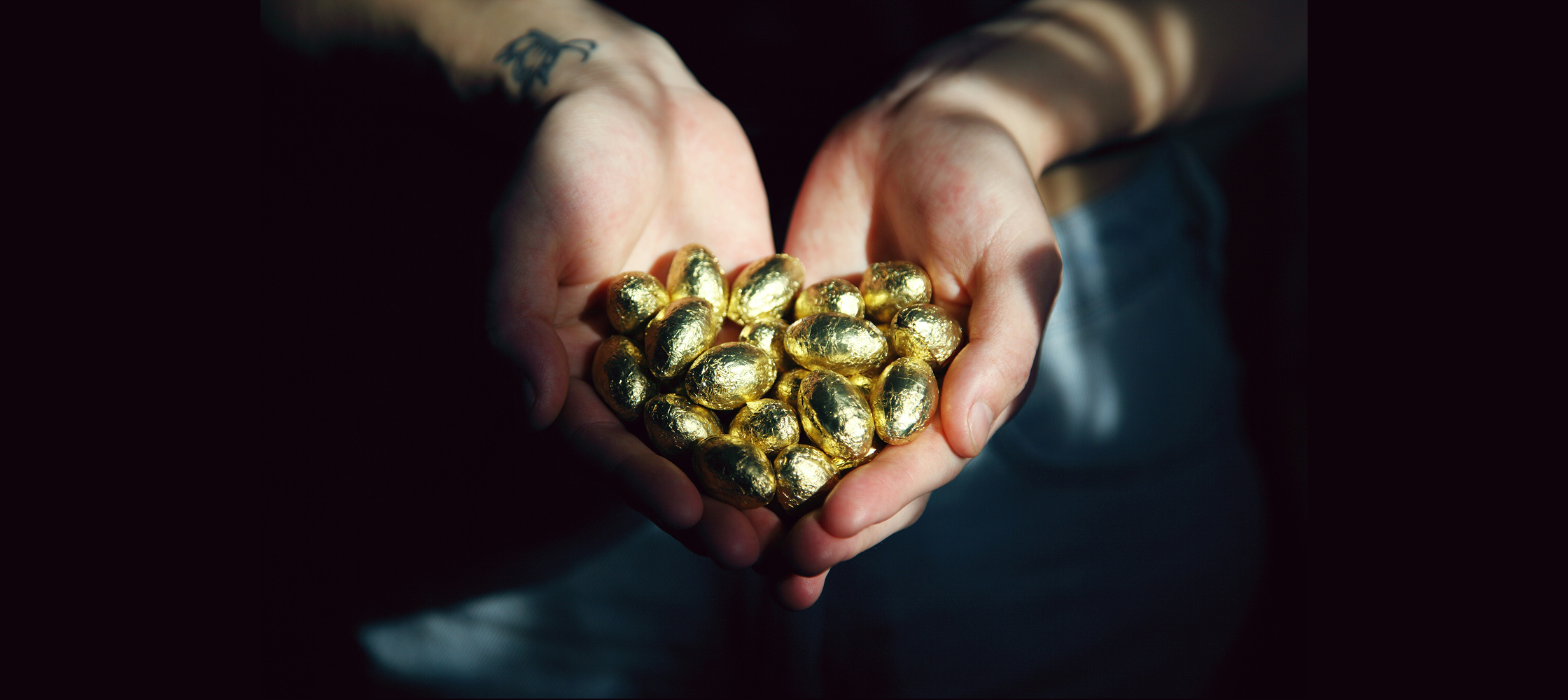Walk into any luxury flagship and you’ll see the same formula: a high price tag presented as proof of worth. For much of the last century, this equation held. Wealth was shorthand for value. But that logic no longer convinces. The market and culture at large has moved on.
Price can signal exclusivity, but it doesn’t guarantee meaning. A $5 coffee brewed with ritual and care may create more attachment than a $500 accessory bought off the rack. Value, unlike wealth, is multidimensional: cultural, emotional, functional, and narrative. Brands that mistake expense for value risk finding themselves in the wrong quadrant of culture.
Thesis: Wealth is a signal, not the substance. The luxury slowdown and the rise of resale/secondary markets show that expensive price tags no longer guarantee perceived value. Craft, cultural weight, and storytelling are the true determinants of what endures.
For decades, luxury equated price with value. A Birkin bag or a Swiss watch wasn’t just an accessory; the price was proof of worth. But recent data shows this logic is cracking. Bain-Altagamma’s 2025 report revealed flat luxury growth after a decade-long boom, with price hikes outpacing consumer willingness to pay. McKinsey’s State of Fashion 2025 likewise shows buyer skepticism: over half of respondents said luxury no longer justifies its cost.
This isn’t about affordability. It’s about trust. Consumers are asking: Does this brand earn its price through heritage, craft, or cultural significance - or is it simply charging more?
Platforms like StockX and The RealReal are proof points. StockX reported over 60 million lifetime trades by 2024, driven by collaborations and scarcity drops. A Travis Scott sneaker release often commands higher resale than a brand-new Louis Vuitton sneaker at retail. Why? Because scarcity tied to culture trumps wealth alone.
The RealReal notes that watches like the Rolex Daytona and Patek Philippe Nautilus consistently resell for above retail demonstrating how heirloom value holds stronger than logo-driven luxury.
Vogue Business has called craftsmanship “luxury’s most valuable currency” (2025). Brands like Bottega Veneta spotlight their ateliers and material intelligence rather than logos. Hermès has leaned into its repair and restoration programs, subtly repositioning itself as steward of permanence rather than purveyor of products.
Evidence:
The Value vs. Wealth Quadrant

The first code is clear: expensive ≠ valuable. What lasts is meaning, not markup.
Thesis: The sharper divide is not generations, but levels of security. Resource-pressed buyers optimize for immediacy and cultural visibility; resource-rich buyers optimize for permanence and legacy.
It’s tempting to say Gen Z = YOLO, Boomers = legacy. But evidence complicates that. Deloitte’s 2025 Gen Z & Millennial Survey found over 50% of Gen Z don’t feel financially secure, while The Lancet reported 59% of youth feel “very” or “extremely” worried about climate change. In that context, buying into drops, concerts, and cultural moments is not frivolity - it’s rational adaptation to uncertainty.
By contrast, resource-rich cohorts, often older, but not always, invest in heirlooms and craft because they can afford to think long-term. A Patek Philippe is not just a watch; it’s an intergenerational contract (“You never actually own a Patek Philippe…”).
Resource-Pressed (short horizon)

Resource-Rich (long horizon)

The second code: value strategies follow risk horizons. Short-term culture vs. long-term heritage. Both rational.
Thesis: Value definitions are contextual. Europe codes value as craft, North America as cultural heat, East Asia as quality + heritage, and the Middle East as spectacle with younger segments demanding culture too.
The Value Code concludes: Value is cultural, not financial. Brands that design for meaning anchored in craft, story, and cultural nuance, will endure where pure wealth signals fade.

For the last decade, the marketing mandate has been simple: Speed. Identify the trend, mimic the trend, monetize the trend. But the machinery of cool has broken down. The trend cycle, which once moved on a breathable 20-year loop, has collapsed into a hyper-accelerated blur of micro-aesthetics that rise and die in weeks. It is time to stop chasing. It is time to build Cultural Antibodies.

Hermès commissioned nearly 80 creatives - illustrators, animators, artists, to generate social-content aligned with “Drawn to Craft.” That means instead of traditional product shots or celebrity ads, you get a mosaic of artistic interpretations keyed to craft, heritage and creative vision.

For decades, price was mistaken for proof. Luxury houses sold status. Tech brands sold aspiration. And for a while, the market played along. But that equation is breaking. The Value Code is a three-part series unpacking how value is being rewritten across culture, commerce, and design. It looks at why expensive no longer equals valuable, and how brands must now earn their place through meaning, craft, and cultural resonance.
Drop us a note and we’ll
schedule a free consultation.